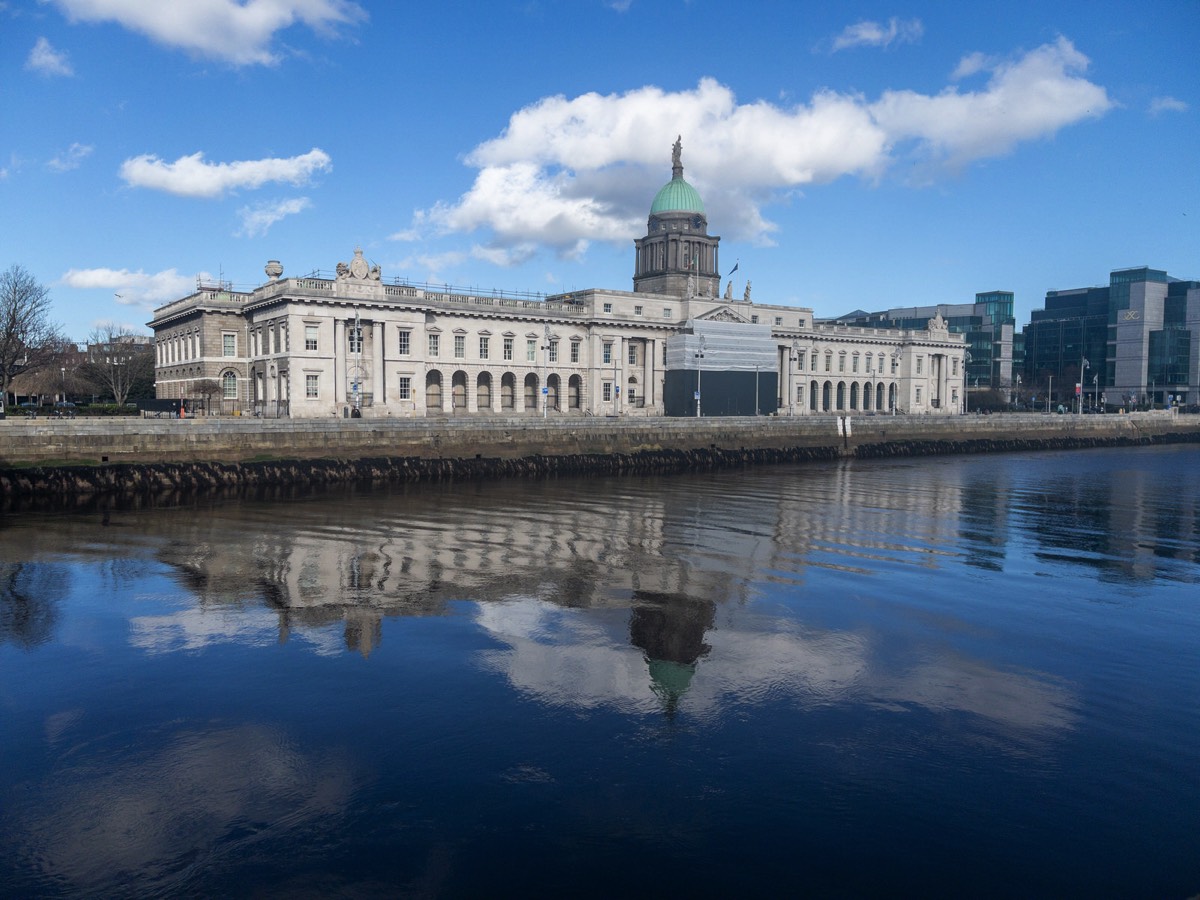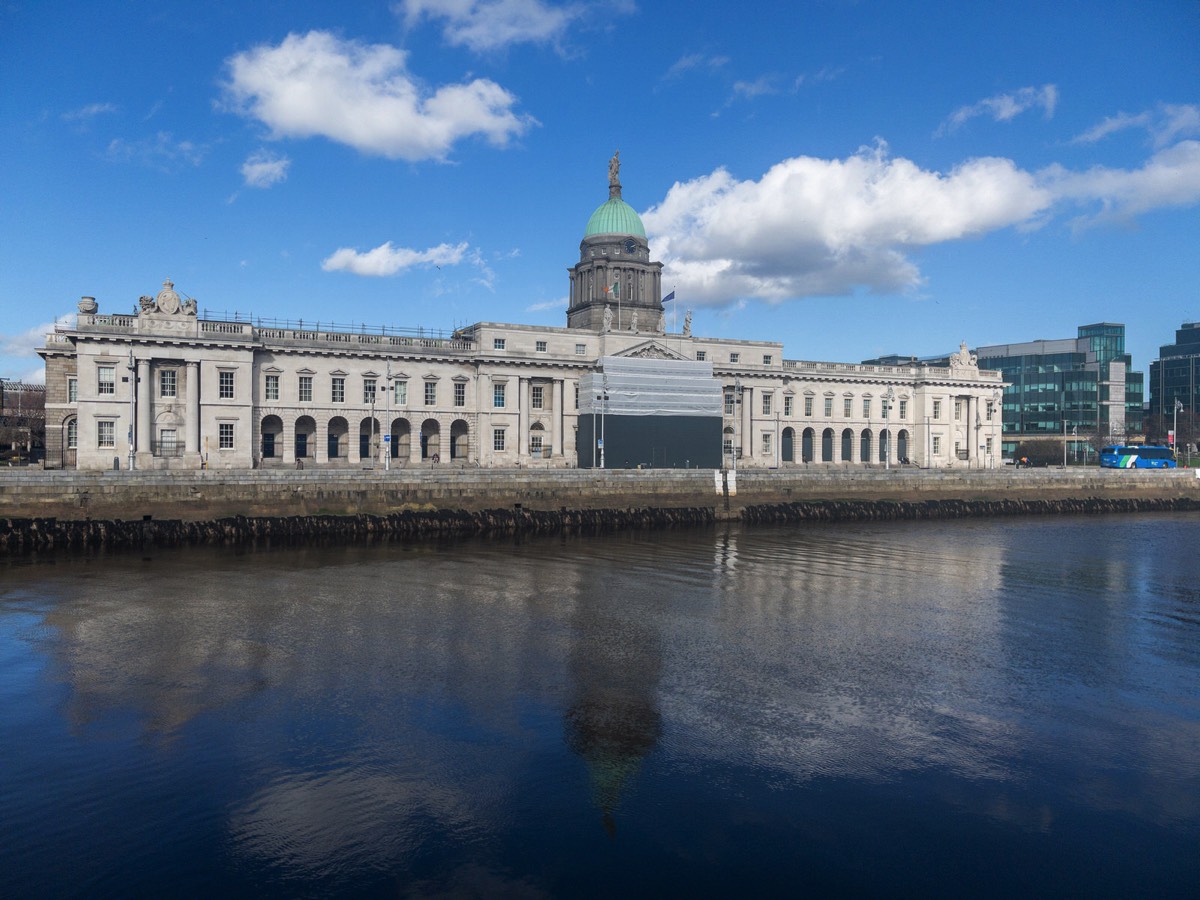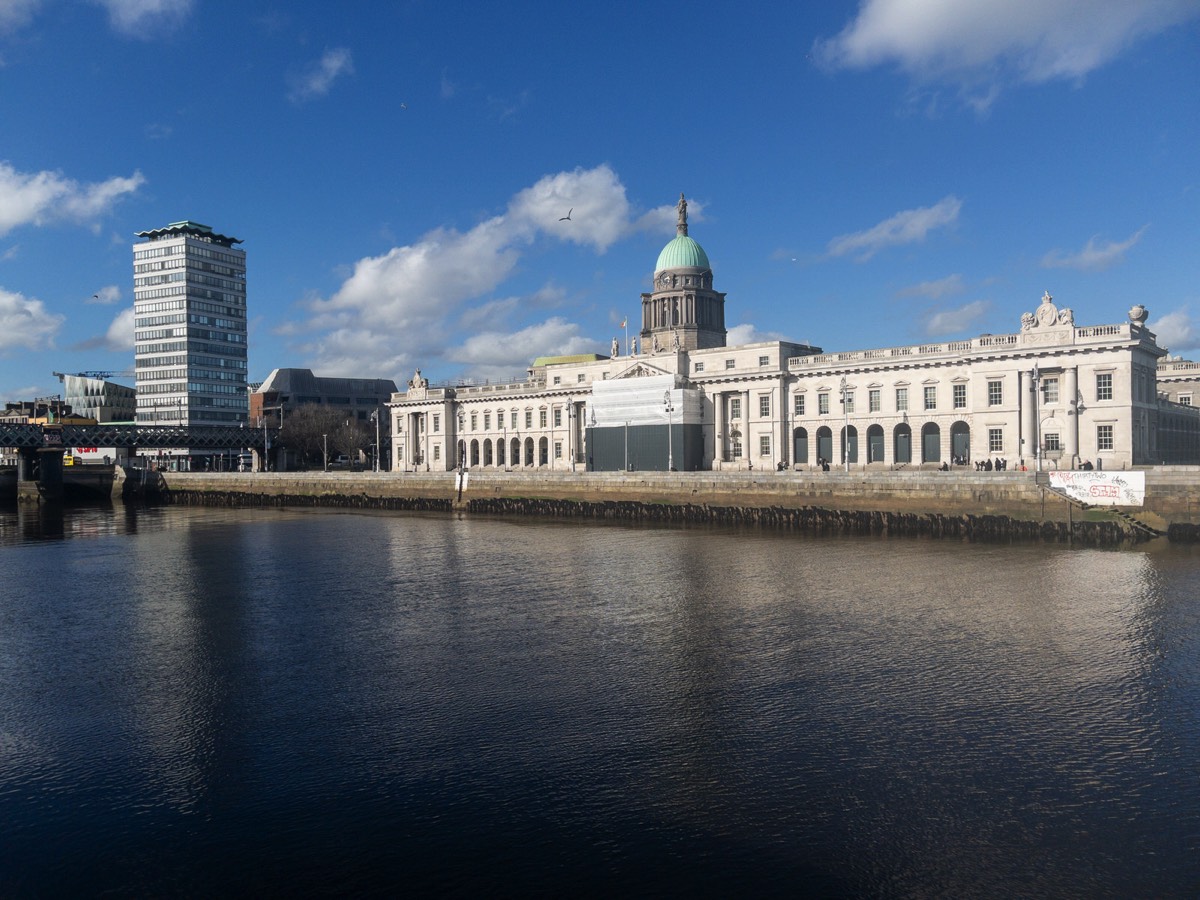CUSTOMS HOUSE DUBLIN
THE CUSTOMS HOUSE DUBLIN [22 FEBRUARY 2021]
Back in 1968 I was a Customs Agent and I had to visit this building twice a day and it was an unpleasant experience as the staff were less than pleasant and that was being generous to them. Of course the Civil Service has changed greatly since then. I must admit that my father was a senior civil servant based there and I really do hope that it was a bit better to deal with. The upside was that my experience encourage me to undertake a career change and I later qualified as an Electronics Engineer and one of my co-workers ended up as a NASA employee.
The Custom House is a neoclassical 18th century building in Dublin, Ireland which houses the Department of Housing, Local Government and Heritage. It is located on the north bank of the River Liffey, on Custom House Quay between Butt Bridge and Talbot Memorial Bridge.
Construction started in 1781, and for his assistants Gandon chose Irish artists such as Meath stone-cutter Henry Darley, mason John Semple and carpenter Hugh Henry. Every available mason in Dublin was engaged in the work. When it was completed and opened for business on 7 November 1791, it had cost £200,000 to build – a considerable sum at the time. The four facades of the building are decorated with coats-of-arms and ornamental sculptures (by Edward Smyth) representing Ireland's rivers. Another artist, Henry Banks, was responsible for the statue on the dome and other statues.
As the port of Dublin moved further downriver, the building's original use for collecting custom duties became obsolete, and it was used as the headquarters of the Local Government Board for Ireland. During the Irish War of Independence in 1921, the Irish Republican Army burnt down the Custom House, in an attempt to disrupt British rule in Ireland. Gandon's original interior was completely destroyed in the fire and the central dome collapsed. A large quantity of irreplaceable historical records were also destroyed in the fire. Despite achieving its objectives, the attack on the Custom House was a setback for the IRA as a large number of Volunteers were captured either during the attack or when falling back.
After the Anglo-Irish Treaty, it was restored by the Irish Free State government. The results of this reconstruction can still be seen on the building's exterior today – the dome was rebuilt using Irish Ardbraccan limestone which is noticeably darker than the Portland stone used in the original construction. This was done as an attempt to promote Irish resources.
Further restoration and cleaning of the stonework was done by an Office of Public Works team in the 1980s.
Back in 1968 I was a Customs Agent and I had to visit this building twice a day and it was an unpleasant experience as the staff were less than pleasant and that was being generous to them. Of course the Civil Service has changed greatly since then. I must admit that my father was a senior civil servant based there and I really do hope that it was a bit better to deal with. The upside was that my experience encourage me to undertake a career change and I later qualified as an Electronics Engineer and one of my co-workers ended up as a NASA employee.
The Custom House is a neoclassical 18th century building in Dublin, Ireland which houses the Department of Housing, Local Government and Heritage. It is located on the north bank of the River Liffey, on Custom House Quay between Butt Bridge and Talbot Memorial Bridge.
Construction started in 1781, and for his assistants Gandon chose Irish artists such as Meath stone-cutter Henry Darley, mason John Semple and carpenter Hugh Henry. Every available mason in Dublin was engaged in the work. When it was completed and opened for business on 7 November 1791, it had cost £200,000 to build – a considerable sum at the time. The four facades of the building are decorated with coats-of-arms and ornamental sculptures (by Edward Smyth) representing Ireland's rivers. Another artist, Henry Banks, was responsible for the statue on the dome and other statues.
As the port of Dublin moved further downriver, the building's original use for collecting custom duties became obsolete, and it was used as the headquarters of the Local Government Board for Ireland. During the Irish War of Independence in 1921, the Irish Republican Army burnt down the Custom House, in an attempt to disrupt British rule in Ireland. Gandon's original interior was completely destroyed in the fire and the central dome collapsed. A large quantity of irreplaceable historical records were also destroyed in the fire. Despite achieving its objectives, the attack on the Custom House was a setback for the IRA as a large number of Volunteers were captured either during the attack or when falling back.
After the Anglo-Irish Treaty, it was restored by the Irish Free State government. The results of this reconstruction can still be seen on the building's exterior today – the dome was rebuilt using Irish Ardbraccan limestone which is noticeably darker than the Portland stone used in the original construction. This was done as an attempt to promote Irish resources.
Further restoration and cleaning of the stonework was done by an Office of Public Works team in the 1980s.



You will find links to buy products from Amazon, Google and other partners. If you click on these links, you’ll find that the URL includes a small extra piece of text which identifies that the click came from my websites. This text is an affiliate code, and it means that I get a small percentage of the money you spend if you choose to buy that product, or, in some cases, other products from the site soon after. These affiliate links help pay the costs of producing my websites and ensure that the content is free to you.
COPYRIGHT INFORMATION BELOW APPLIES ONLY TO PHOTOGRAPHS

This work by William Murphy aka Infomatique is licensed under a Creative Commons Attribution-NonCommercial-ShareAlike 4.0 International License.
Permissions beyond the scope of this license may be available at https://excellentstreetimages.com/in-the-year-twentytwenty/copyright/.
